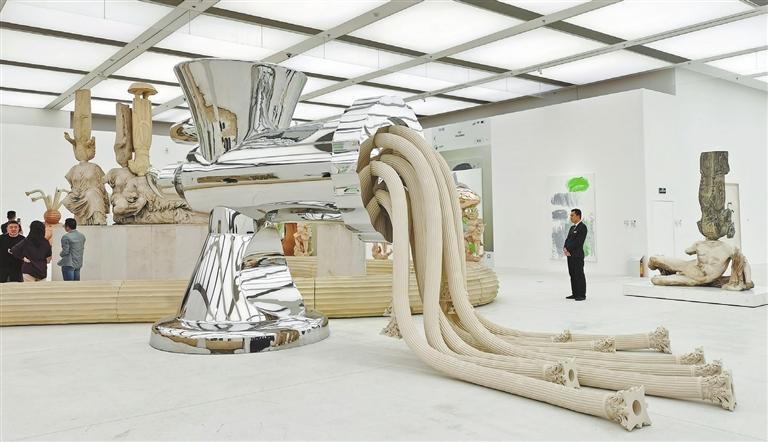
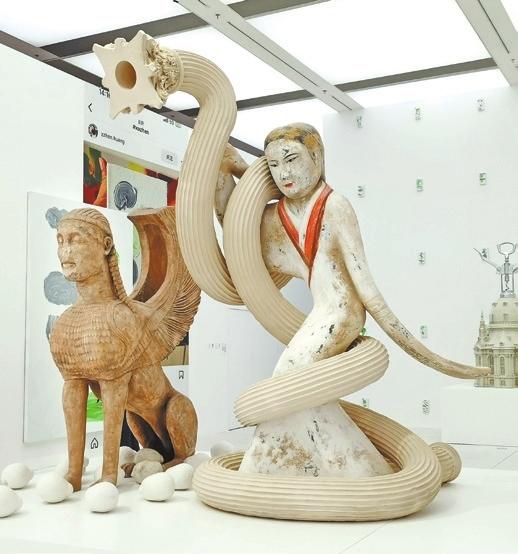
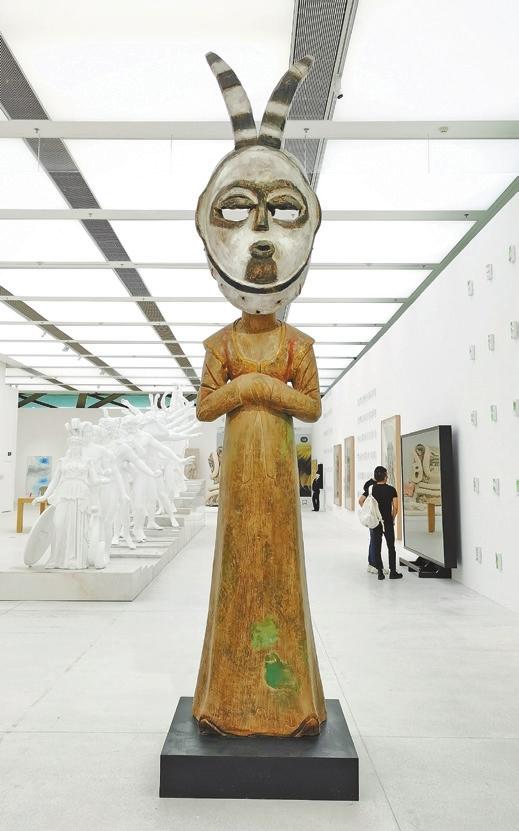
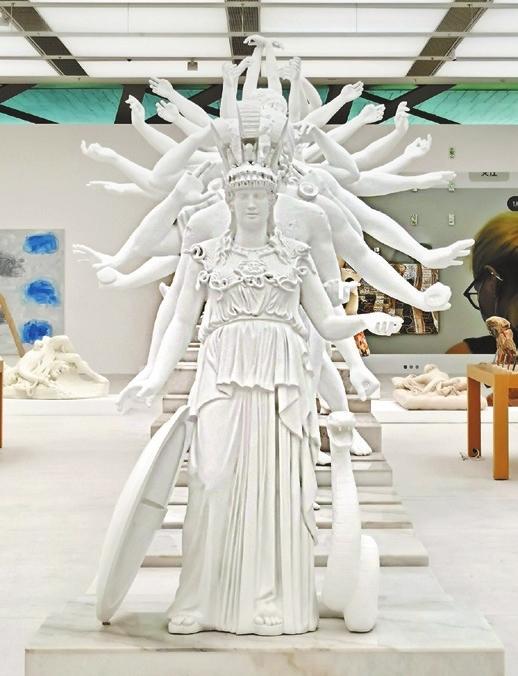
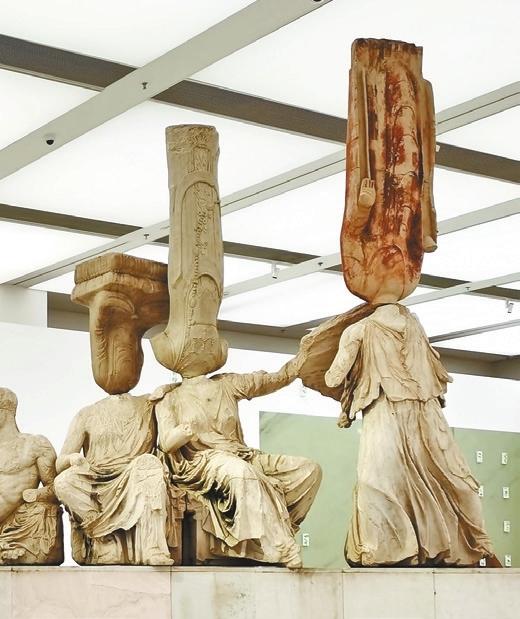
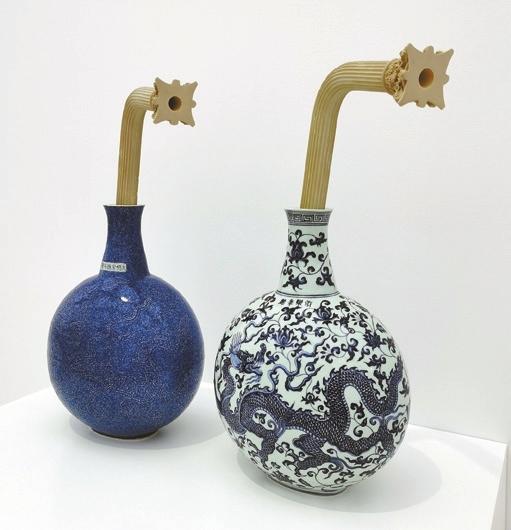
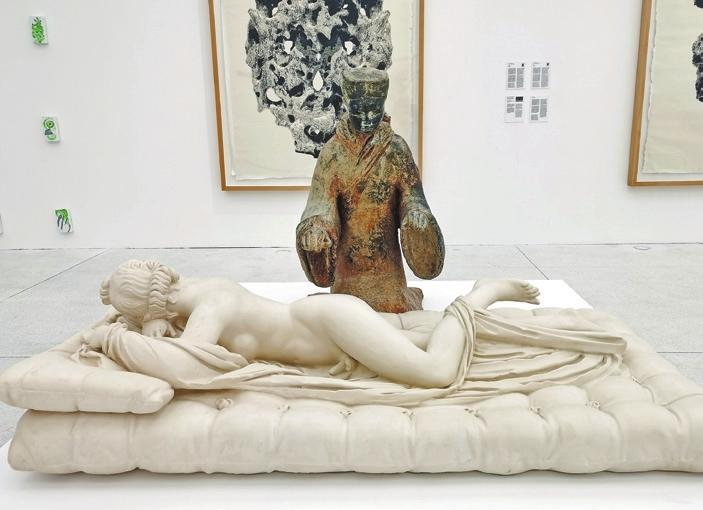
Cao Zhen caozhen0806@126.com A TWISTED and monumental ancient Greek pillar winds sinuously like a snake, classic Western statues engage in the intricate thousand-hand bodhisattva dance, an ancient Chinese pottery figure dons a Nigerian Bini mask, and another ancient female Chinese pottery figure appears to be tending to the Sleeping Hermaphroditus. These surreal scenes form part of a new exhibition at the Shenzhen Museum of Contemporary Art and Urban Planning. Renowned contemporary Chinese artist Xu Zhen is exhibiting his striking artworks at the “Ecosystem as Medium” exhibition curated by Wang Yamin. Against a backdrop of increased global cultural exchange, Xu’s creations serve as both a reflection of reality and a metaphor for civilizations across divergent times and spaces. Each exhibit, while possibly enigmatic, promises to astonish viewers with its sheer artistic brilliance. Upon entering the bright and spacious exhibition hall, visitors are greeted by a towering ancient Greek column contorted into the shape of a snake. Titled “Hello,” this sculpture is Xu’s latest creation for the exhibition. By melding the classical essence of Greek pillars with the aggressive snake, the artwork aims to challenge viewers’ perceptions of ancient civilizations. Various forms of these distorted pillars can be observed throughout the exhibition, such as in the piece “Tools — Roman Columns, Meat Grinder.” This installation features a colossal stainless steel meat grinder with multiple Roman columns coming out of it. The juxtaposition transforms the rigid columns into elongated “meat” stripes, humorously deconstructing classical and contemporary objects. In “Alien 3 — Roman Column, Han Court Dancer,” a Roman column is also metamorphosed into a soft form, coiling around a Han Dynasty (202 B.C.-A.D. 220) female dancer statue resembling a snake. Xu describes the relationship between the ancient Chinese dancer and the Roman column as one of companionship or confrontation, offering a metaphor for the interplay of civilizations in a globalized world. The “Beverage” series turns ancient Greek pillars into drinking straws, inserted into traditional Chinese blue-and-white bottles and vases and even into the iconic sculptures of the Farnese Hercules, the Fall of Icarus, and the Venus of Willendorf. These absurd and dramatic amalgamations of Eastern and Western symbols generate a visually arresting experience, symbolizing the complex interactions within civilizations. Similar combinations can be found in the “Eternity” series. Some works in the series merge headless Western mythology sculptures with headless ancient Chinese Buddhist statues, commonly found in museums worldwide. This convergence of immortal Western gods and Buddhist figures in striking visual compositions signifies both a sense of awe and a portrayal of reconcilable cultural disparities. Through “Eternity,” Xu casts a broader perspective on global civilizations, offering a fresh sensory perception of cultural heritage. Noteworthy among the exhibits is “European Thousand Arms Classical Sculpture,” featuring 19 iconic Western statues engaging in the intricate thousand-hand bodhisattva dance. Included in this ensemble are sculptures of Poseidon, Apollo from the roof of Paris’ Palais Garnier, and the Statue of Liberty, all united in the exuberant celebration depicted in the dance. The exhibition showcases over 100 works created by Xu in the last 20 years, organized into thematic series such as “Alien,” “Evolution,” and “Under Heaven.” The artist synthesizes elements of Chinese and Western cultures, using a diverse range of mediums, including painting, sculpture, installation, video, photography and performance. Xu believes that his creations serve to challenge misconceptions, foster mutual understanding, and explore the cultural differences in the world. Dates: March 30-May 18 Hours: 10 a.m.-6 p.m., closed Mondays Tickets: 60 yuan (standard), 45 yuan (concession) Booking: WeChat account “深圳市当代艺术与城市规划馆” Venue: Shenzhen Museum of Contemporary Art and Urban Planning, Futian District (深圳市当代艺术与城市规划馆) Metro: Line 3 or 4 to Children’s Palace Station (少年宫站), Exit A2 | 
